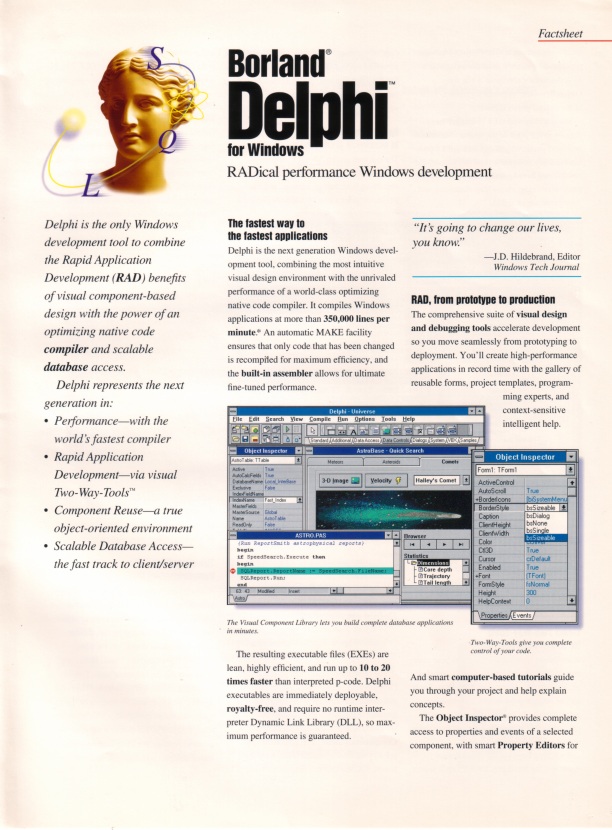
(Delphi 28 rendered with a gradient on a D2D canvas in a VCL application)
Today is another Delphi anniversary, given it was first introduced at the SD West Conference in February 1995 (see some of my original pictures and material here and here and here). Long time has gone by, and it seems that the programming languages introduced that year (Delphi, Java, JavaScript) keep doing fairly well. Delphi was focused on making it esy and fast to build Windows applications, and this is still true today -- but it is making building mobile apps as easy.
In fact, some of the original ads (see below) where focused on the "fast development" and "return on investment":

Other tenets of the original Delphi still continue today, including offering a easy to read and maintain language, native compilers producing optimized and secure binary code, xcopy installation given no runtime execution environment is needed -- and these are not obvious given most of the programming tools today require an extremely complex deployment structure and large dependencies on runtimes that need to be kept up to date for security reasons.

Not only Delphi overall model has remained valuable over time, but the investment in the source code has been preserve. We keep hearing of companies easily migrating 20 years old large applications to the latest Delphi in a very short amount of time. This is unheard of in the industry, where language, tooling, and framework changes require partial rewrites of the application source code every few years.
As a commenter wrote, Delphi was VB done right. With the original native VB long abandoned by Microsoft, and VB.NET "nearly frozen", Delphi has kept more steam and has remained a viable option over the years.

Now if you want to get more about where Delphi is today and get a sneak peak of coming features, tune it to today's DelphiCon session "Looking Forward with Modern Delphi" at 5 PM European time. Sign up at https://lp.embarcadero.com/DelphiCon2023.
